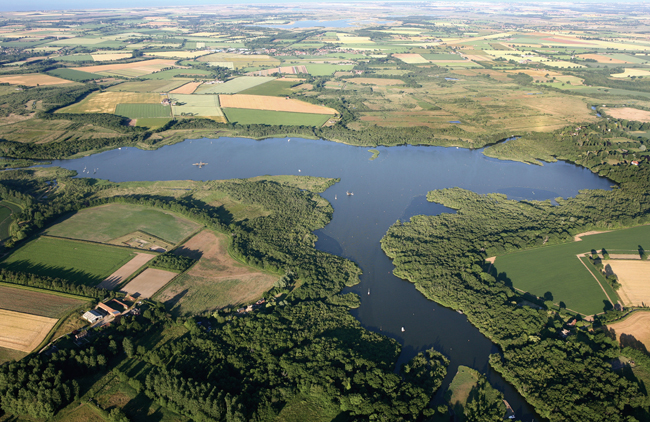Story of a broad

Barton Broad has played a significant part in the history of the Broads.
It was the ridges of peat left across the south end of the broad that gave the first clues to the fact that the broads were actually dug by hand. But did you know it also has links to Nelson? Here's the story of this important location.
Barton Broad timeline
| Type of sediment | Date | Significant events |
|---|---|---|
| Peat | 13th or 14th century | Barton Broad was formed by people digging out peat for fuel |
| Light coloured mud, with snail shells and bits of stonewort | 1730 | River Ant diverted for navigation purposes to flow through Barton Broad |
| 1760s and 1770s | Admiral Horatio Nelson spent time here in his youth. His sister rented Barton Broad, and Horatio visited her when on leave from the navy. (Tradition has it that he once lost a chain and locket in these waters.) | |
| 1834 | It was from his observations at Barton that Samuel Woodward first suggested the Broads were not natural but dug by human hand (on looking carefully at the stripes of high ground crossing the southern end of the broad). This idea was not resurrected until the 1940s | |
| 1840 | The broad covered 284 acres of open water | |
| 1880s | Start of higher nutrient input into the Broads | |
| 1885 | 34 hectares of reed swamp around the broad | |
| Increased sewage effluent, plant community dominated by taller, more productive species, darker sediment | 1924 | First sewage treatment works at North Walsham, in a period of growing human population in the local villages |
| 1950s | Beginning of seriously high levels of nutrients in the broads | |
| Paler brownish sediment from algae and sediments from elsewhere washed around because there were no plants to keep them stable | 1960s | Rapid build-up of mud - made up of erosion from river-banks and lots of dead algal cells from the water. Until 1963 there were otters on Pleasure Hill Island |
| 1970s | The water was becoming thick with algae | |
| 1977 | Tertiary chemical dosing at Stalham sewage treatment works | |
| 1980 | Sewage from North Walsham diverted away from Barton Broad | |
| 1982 | Phosphate stripping equipment installed at Stalham sewage treatment works | |
| 1985 | One hectare of reed swamp left | |
| 1988 | Broads given National Park status and Broads Authority formed a year later to look after it | |
| November 1995 | Mud pumping started | |
| 1996/7 | DynaSand filters installed at Stalham sewage treatment works | |
| 2000 | Clearest clear water period for 25 years | |
| August 2000 | Mud pumping of main broad finished | |
| February 2001 | Fish-proof curtains installed creating approximately 4 ha of clear water | |
| June 2002 | 14,000 cobweb brushes (artificial plants) installed | |
| February 2003 | Two additional fish-proof curtains installed and one of the original curtains moved creating over 4 ha of clear water | |
| July 2003 | Beds of aquatic plants growing well in one of the enclosures | |
| August 2003 | Floating reed island installed | |
| August 2005 | Plants growing in margins of broad outside the clear water areas for the first time in more than 30 years |

